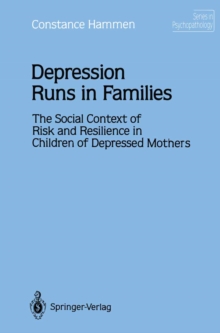
The Behavioral High-Risk Paradigm in Psychopathology PDF
Edited by Gregory A. Miller
Part of the Series in Psychopathology series
Description
As editor of the Springer-Verlag Series in Psychopathology, Lauren Alloy knew of my work in cognitive psychophysiology to study processing anomalies in nonpatients at risk for psychopathology and invited me to edit a book for the series.
This evolved into an opportunity to address an aspect of the unfortunate nature-nurture battle in the field, which too often emphasizes genes and macrolevel environment.
Extreme positions are often taken (sometimes unwittingly), even though a great deal of the actual research is between the extremes, including laboratory psycho- logical and psychophysiological studies.
There is more to biology than genes and even more to it than things like brain imaging, enlarged ventricles, glucose metabolism rate, and receptor density, which have received a great deal of attention in recent years. of studies at the One goal of this book is to provide demonstrations intersection between psychology and biology via psychophysiology.
In parallel, another goal is to showcase solid psychological research that may bear directly on what are often considered biological issues.
For example, Chapter 4, by Walker and colleagues, can be considered classically psychological, because the authors focus on overt behavior.
Yet some of the importance of their work is its implication of a particular biological process involved in the gross motor behavior anomalies they have identified in the etiology of schizophrenia.
Similarly, whereas in Chapter 7, Klein and Anderson articulate the behavioral high-risk paradigm quite well, in Chapter 10, Yee relies on their approach in pursuing psycho- physiological research on risk for depression.
Information
-
Download - Immediately Available
- Format:PDF
- Publisher:Springer New York
- Publication Date:06/12/2012
- Category:
- ISBN:9781461242345
Information
-
Download - Immediately Available
- Format:PDF
- Publisher:Springer New York
- Publication Date:06/12/2012
- Category:
- ISBN:9781461242345








